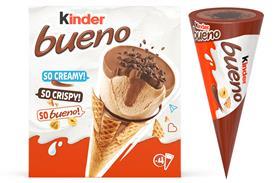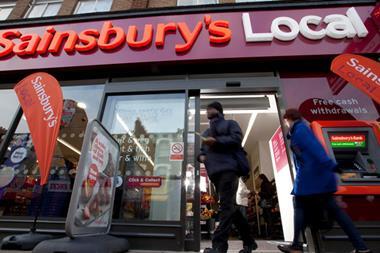Tesco has totally decimated the competition over the past year, reveals the latest IGD Grocery Retailing Report on the UK market.
The multiple’s turnover was a whopping 82% greater than its nearest rival, Sainsbury, according to the report. Sales leapt 9.6% between 2003/04 and 2004/05 to £27.1bn, equal to two thirds of the sector’s growth as a whole. Waitrose and Asda also continued to show growth, the former seeing its turnover increase by 9.8% and the latter by 7.6%.
However, Sainsbury, Somerfield, M&S and Iceland actually produced negative like-for-like sales, the first time so many retailers have failed to achieve positive underlying sales growth.
The sector’s combined turnover of £81.2bn was up just 4.6% on the previous year, the slowest rate of growth in any year since 1999/2000.
The report also showed the first fall in combined operating profit for the sector since 1999/2000, the figure slumping 10% to £3.4bn. Profit margins fell in line with this to 4.2% and only Tesco, with its 6.2% margin, achieved mid-1990s levels when the sector average stood at above 6%. Asda’s stood at 4.8%, Sainsbury’s at 2.2% and Morrisons at 3.1%.
Nick Everitt, IGD programme manager, said: “It has been a continuation of what we’ve seen before. They are really leading the way - Waitrose at the premium end and Tesco with its inclusivity.”
He attributed Tesco’s success to its range and
multi-format model. “Tesco has had a clear strategy and has driven its formats. It added 1.4 million sq ft to its floor space, significantly ahead of anyone else,” he said. “It’s the flexibility in its format, its ability to open Express as well as hypermarkets that is key. It also has a quite significant landbank and can extend a large number of superstores.”
However, he added, the gulf between Tesco and the competition had been accentuated by the problems experienced by Sainsbury and Morrisons, which were likely to bounce back.
>>p26 IGD Grocery Retailing Report
The multiple’s turnover was a whopping 82% greater than its nearest rival, Sainsbury, according to the report. Sales leapt 9.6% between 2003/04 and 2004/05 to £27.1bn, equal to two thirds of the sector’s growth as a whole. Waitrose and Asda also continued to show growth, the former seeing its turnover increase by 9.8% and the latter by 7.6%.
However, Sainsbury, Somerfield, M&S and Iceland actually produced negative like-for-like sales, the first time so many retailers have failed to achieve positive underlying sales growth.
The sector’s combined turnover of £81.2bn was up just 4.6% on the previous year, the slowest rate of growth in any year since 1999/2000.
The report also showed the first fall in combined operating profit for the sector since 1999/2000, the figure slumping 10% to £3.4bn. Profit margins fell in line with this to 4.2% and only Tesco, with its 6.2% margin, achieved mid-1990s levels when the sector average stood at above 6%. Asda’s stood at 4.8%, Sainsbury’s at 2.2% and Morrisons at 3.1%.
Nick Everitt, IGD programme manager, said: “It has been a continuation of what we’ve seen before. They are really leading the way - Waitrose at the premium end and Tesco with its inclusivity.”
He attributed Tesco’s success to its range and
multi-format model. “Tesco has had a clear strategy and has driven its formats. It added 1.4 million sq ft to its floor space, significantly ahead of anyone else,” he said. “It’s the flexibility in its format, its ability to open Express as well as hypermarkets that is key. It also has a quite significant landbank and can extend a large number of superstores.”
However, he added, the gulf between Tesco and the competition had been accentuated by the problems experienced by Sainsbury and Morrisons, which were likely to bounce back.
>>p26 IGD Grocery Retailing Report



















No comments yet